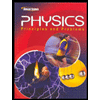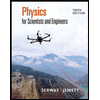Hi I am in physics 1 and I need help with this problem. It saids a boy runs in an open field. He runs 233m due north in 77 seconds, turns 90 degrees to his left and runs 178m in 93 seconds. Sketch a map of his motion and find the following quantities of his motion during this period from starting time to final time a) Map of his motion b) The total distance he runs (233m + 178m= 411m) c) The displacement from starting position to final position. What I have thus far is I got c=sqrt (233)^2+(178)^2=293m. Would I subtract this number from the total distance? Please includes detailed steps of how to solve this
Displacement, Velocity and Acceleration
In classical mechanics, kinematics deals with the motion of a particle. It deals only with the position, velocity, acceleration, and displacement of a particle. It has no concern about the source of motion.
Linear Displacement
The term "displacement" refers to when something shifts away from its original "location," and "linear" refers to a straight line. As a result, “Linear Displacement” can be described as the movement of an object in a straight line along a single axis, for example, from side to side or up and down. Non-contact sensors such as LVDTs and other linear location sensors can calculate linear displacement. Non-contact sensors such as LVDTs and other linear location sensors can calculate linear displacement. Linear displacement is usually measured in millimeters or inches and may be positive or negative.
Hi I am in physics 1 and I need help with this problem. It saids a boy runs in an open field. He runs 233m due north in 77 seconds, turns 90 degrees to his left and runs 178m in 93 seconds. Sketch a map of his motion and find the following quantities of his motion during this period from starting time to final time
a) Map of his motion
b) The total distance he runs (233m + 178m= 411m)
c) The displacement from starting position to final position.
What I have thus far is I got c=sqrt (233)^2+(178)^2=293m. Would I subtract this number from the total distance?
Please includes detailed steps of how to solve this
Step by step
Solved in 4 steps with 3 images






